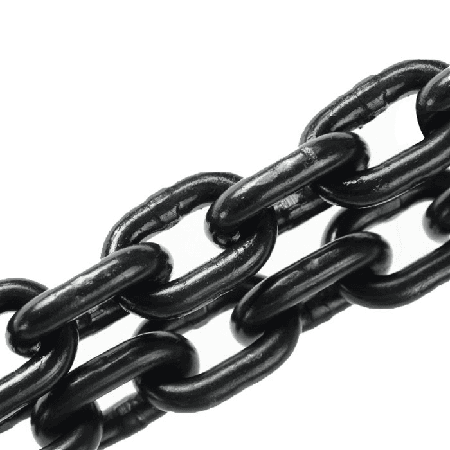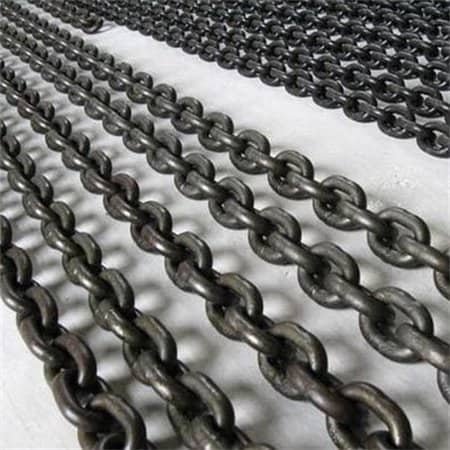Do you know how high-strength chains are made?
Chains are indispensable components in modern industries, widely used in lifting, transportation, and machinery. Their strength and durability make them essential tools for heavy-duty lifting and mechanical drives. In this article, we will take you through the chain manufacturing process, from raw material selection to the final inspection, revealing the craftsmanship behind chain production.
Raw Material Selection for Chains
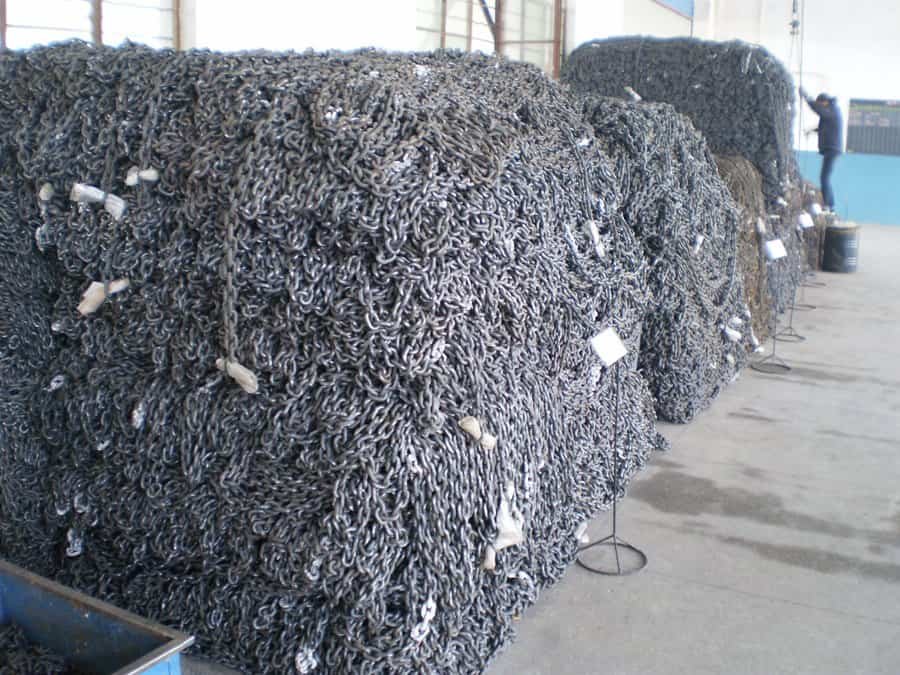
The quality and durability of a chain depend largely on the materials used. Common materials in chain production include carbon steel, stainless steel, and alloy steel. Carbon steel is typically used for standard lifting chains, while stainless steel is more suitable for corrosive environments. Alloy steel offers higher tensile strength, making it ideal for heavy-duty applications.
Chain Link Forming and Welding
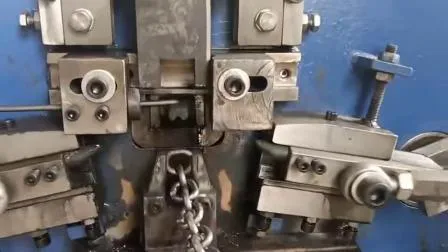
The primary components of a chain are the links, which are formed and welded together to create a continuous loop. Each link is shaped in a precise mold and then welded together using high-temperature techniques to ensure strength and stability. Welding ensures that the chain remains durable and reliable, preventing breakage during use.
Heat Treatment Process for Chains
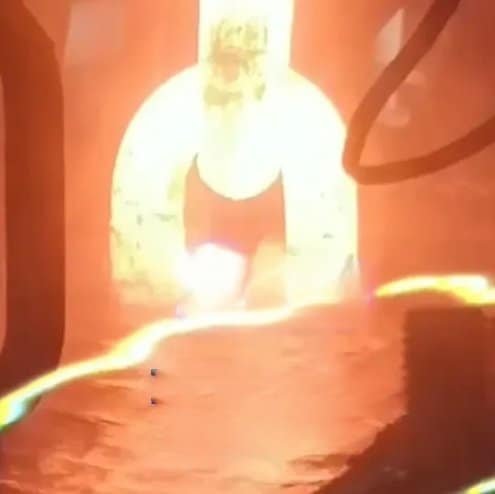
Heat treatment is a critical step in chain manufacturing, as it alters the metal’s mechanical properties through heating and cooling. Chains typically undergo two main heat treatments: quenching and tempering. Quenching rapidly cools the metal to enhance hardness, while tempering involves reheating the metal to a lower temperature to adjust its hardness and toughness, ensuring durability and fatigue resistance.
Surface Treatment of Chains
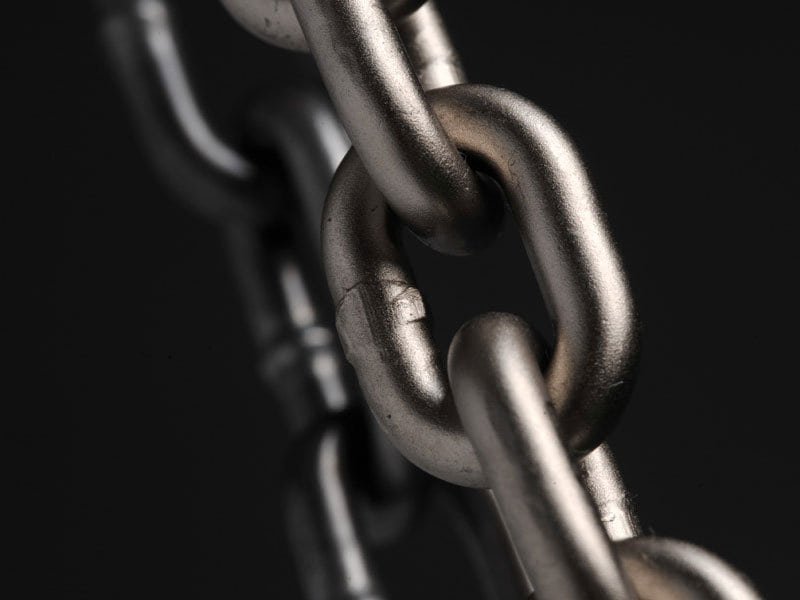
Surface treatment enhances the chain’s appearance and significantly increases its resistance to corrosion and oxidation. Common surface treatments include black oxidation, galvanizing and spray coating. The blackening of chains mainly relates to surface treatment processes aimed at enhancing corrosion resistance and extending service life.Galvanization provides extra protection against rust, especially in moist or chemically aggressive environments, while coating can offer different colors and additional layers of protection.
Quality Control and Testing
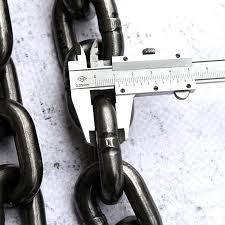
Quality control during the manufacturing process is essential to ensure that every chain performs reliably. Each chain undergoes rigorous tensile testing, dimensional checks, and marking checks. These tests ensure that the chains can deliver consistent performance in real-world applications and meet international safety standards.
Packaging and Shipping of Chains
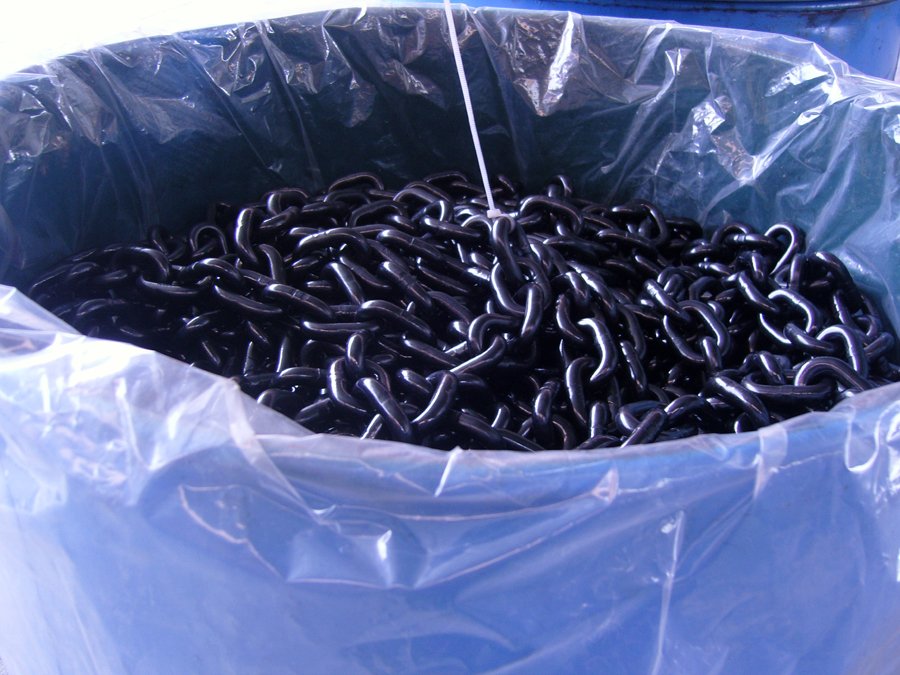
After manufacturing and inspection, chains are carefully packaged to avoid damage during transportation. The most conventional packaging methods are iron drum packaging, wooden case packaging, and plastic reels and we can also provide special packaging, such as plastic buckets or other customized packaging.
Conclusion
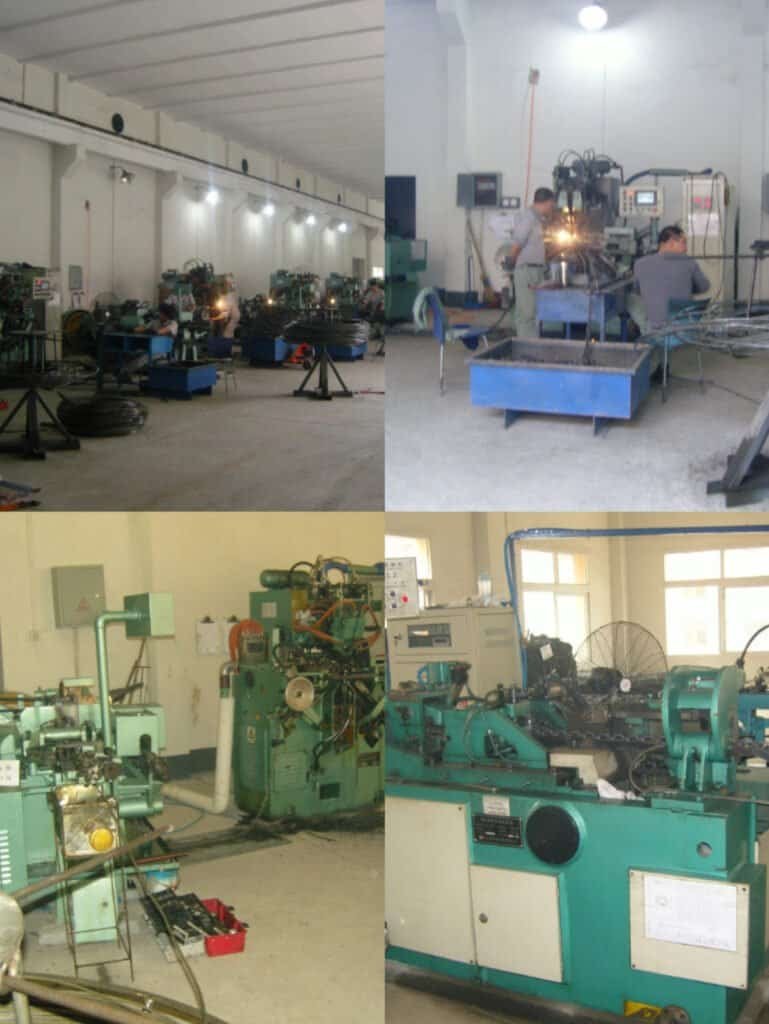
Understanding the chain manufacturing process gives us a deeper appreciation for their vital role in industrial applications. Whether in lifting, transportation, or other mechanical fields, quality chains are crucial for ensuring safety and efficiency.

